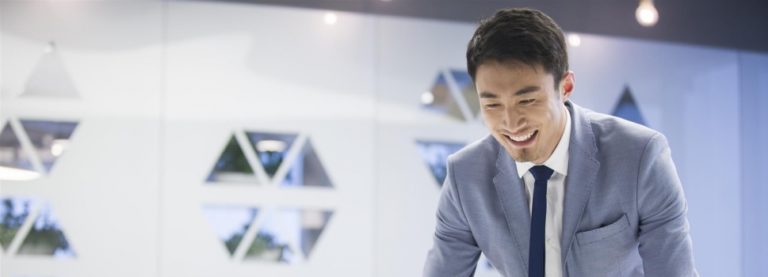
By Sandi Alexander Tuttle
Television shows award money for them. YouTube videos are full of them. We cringe. We gasp. We “like” and “share,” and LOL at people who slip, trip or fall their way to prize money or viral fame.
But in real life, slips, trips and falls (STF) are no laughing matter. They are, in fact, the leading cause of work-related injuries and lost work days at companies all over the world, including here at Xerox. And the physical, emotional and financial costs to you, your family and your company can be substantial.
Most of us have heard of a co-worker who has fallen at work. Maybe you’ve even fallen yourself. None of us are immune to the risks.
However, Xerox’s Sustainability organization wants us to know that it is possible to prevent slips, trips, and falls, and the resulting injuries. All that is required is a little knowledge and a little teamwork.
Slips, trips and falls all occur because of balance issues, but there are slight differences.
- Slips happen when there is too little friction between your feet and the walking/working surface. Common causes of slips are wet or oily surfaces, weather hazards such as snow and ice, or loose and unanchored rugs or mats.
- Trips happen when your foot or lower leg hits an object and your upper body keeps moving, or when you step down to a lower surface. Common causes of tripping are poor lighting, open file drawers and uneven walking surfaces.
- Falls happen, often as a result of a slip or trip, when your body is in an unstable position. A fall can occur when your walking/working surface is at the same level (a hallway or parking lot), or at a lower level (a step or a curb).
Health and safety programs at Xerox
Health and safety is a value demonstrated through programs, emergency preparedness and maintaining strict standards.
Environment, health, safety and sustainability at Xerox: Learn how we align our goals for the environment, health and safety in five key areas to make an impact across our value chain worldwide.
You never know where or when a STF might happen but some places and situations pose a higher risk. Wet floors, uneven surfaces, cluttered hallways, and improper footwear are just some of them. Human factors can also increase the risk: failing eyesight or visual perception, fatigue, the effects of medications, – and behaviors such as not paying attention, rushing, and trying to carry too much.
Unfortunately, but not surprising, the risk of falling, and fall-related problems rises with age. Injuries can range from a relatively minor scrape or a bruise to major injuries such as fractures or lacerations. Some injuries even lead to death.
Tips from the Mayo Clinic
Balance training: Boost your long-term health with these exercises — Five tips to train and strengthen your neuromuscular system and increase your stability.
You and your co-workers should work cooperatively to identify, report, and correct unsafe conditions and behaviors. Here are some things to keep in mind:
- Keep floors and surfaces clean and clear of clutter.
- Clean up spills immediately.
- Secure electrical and phone cords out of traffic areas.
- Close file cabinets and desk drawers.
- Be aware of your surroundings.
- Recognize and report hazards.
- Wear sensible and proper footwear.
- Never stand on a chair, table or surface with wheels.
- Alcohol or drugs, including prescription and over-the-counter medicine, can affect your balance and increase your risk of falling.
Review, like and share this information with your co-workers, and your family members, too. (After all, safe behaviors shouldn’t end with your workday.)
Let’s make safety go viral.



